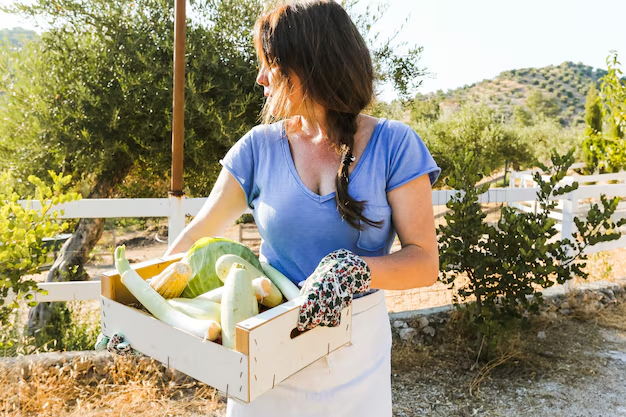The Ultimate Guide to Storing Vegetables in Your Refrigerator: Keep Your Produce Fresh Longer
Fresh vegetables are a vital part of a healthy diet, but they often seem to go bad before we have a chance to use them. Storing them properly in your refrigerator can make a significant difference in extending their shelf life. This guide provides expert tips on how to keep your veggies fresh, ensuring nutritious and delicious meals every time.
🥦 Why Proper Vegetable Storage Matters
Proper storage of vegetables isn't just about avoiding food waste. It also helps retain nutrient content and flavor, which are crucial for both taste and health benefits. Different vegetables require different conditions to stay fresh. Understanding these nuances can dramatically improve the longevity and quality of your produce.
Nutrient Preservation
The nutritional value of vegetables can be compromised if they are not stored correctly. Light, air, and temperature can all lead to nutrient degradation over time. Keeping vegetables in optimal conditions minimizes these risks and preserves their health benefits.
Flavor and Texture
When vegetables are stored incorrectly, they can lose their crunch, flavor, and vibrance. Proper refrigeration ensures that you enjoy every bite of your meals, with all the textures and flavors intact.
🥕 Setting Up Your Refrigerator for Vegetable Storage
Not all refrigerators are set up equally, and making a few adjustments can enhance your vegetable storage game. Here are some key tips for preparing your fridge:
Refrigerator Temperature
Keep your refrigerator temperature set between 32°F and 40°F (0°C to 4°C). This prevents spoilage and slows down the growth of bacteria. It’s important to regularly check the temperature using a reliable refrigerator thermometer.
Crisper Drawer Usage
Most refrigerators come with a crisper drawer designed specifically for fruits and vegetables. It maintains a higher humidity level, which is ideal for keeping produce fresh. Use the humidity controls if available:
- High Humidity 🥬: This is ideal for leafy greens and items that wilt easily.
- Low Humidity 🍎: Suitable for fruits and some vegetables that tend to decay faster.
Avoid Overcrowding
Leaving space between items in your fridge is crucial for proper air circulation. Overcrowding reduces airflow, leading to uneven cooling that can cause some vegetables to spoil faster.
Regular Cleaning
A clean refrigerator prevents the spread of mold and bacteria. Regularly wipe down shelves and drawers and check for any spoiled produce that could contaminate other items.
🌽 Vegetable Storage Tips by Type
Different vegetables require different storage methods due to their unique properties. Here’s how to store various common vegetables in the fridge for maximum freshness:
Leafy Greens (Spinach, Lettuce, Kale)
- Wash and Dry: Wash thoroughly and dry completely before putting them in the refrigerator.
- Storage: Place in a perforated plastic bag or wrap in paper towels to absorb moisture.
- Location: Store in the high-humidity crisper drawer.
Root Vegetables (Carrots, Beets, Radishes)
- Preparation: Remove any leafy tops since they draw moisture from the root.
- Storage: Store in a plastic bag or container with a lid.
- Location: Ideal for the main refrigerator area or low-humidity drawer.
Cruciferous Vegetables (Broccoli, Cauliflower, Brussels Sprouts)
- Preparation: Do not wash until ready to use to prevent mold.
- Storage: Keep in a plastic bag or open container in the crisper.
- Location: High-humidity crisper drawer can extend freshness.
Bulb Vegetables (Onions, Garlic)
- Special Note: While these are best stored outside the fridge, if you do refrigerate them, keep them in a loose, breathable bag to allow airflow.
- Avoid: Storing near potatoes, as they speed up sprouting.
Other Vegetables (Tomatoes, Peppers, Cucumbers)
- Tomatoes: Best stored at room temperature until ripe.
- Peppers: Keep in a plastic bag in the crisper drawer.
- Cucumbers: Store in high-humidity to prevent wilting.
📝 Quick Tips for Maximum Freshness
Here’s a handy summary of essential tips to keep your veggies fresh for longer:
- 🌡️ Monitor Temperature: Regularly check and maintain between 32°F and 40°F.
- 🥗 Use Appropriate Drawers: Utilize crisper drawers with the correct humidity settings.
- 🍂 Remove Tops: For root vegetables, remove green tops to preserve moisture.
- 🥬 Keep Greens Dry: Use paper towels to wick away excess moisture.
- 🥶 Don’t Overpack: Ensure airflow by avoiding crowded shelves.
- 🧹 Regular Cleaning: Prevent spoilage with clean fridge maintenance.
🌟 Final Thoughts: Elevate Your Storage Game
Investing a little time in learning how to store your vegetables can lead to significant savings and more enjoyable meals. With these insights, you'll stay well-informed about how to treat different vegetables, prolonging their freshness, taste, and nutritional value. Happy storing! 🥦🥕🥬
